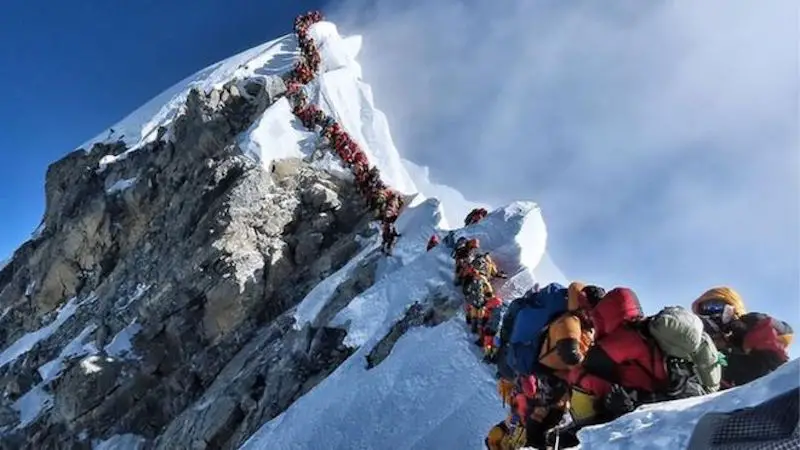While I’ve been away in Africa the past couple of weeks a lot has gone down in the world of outdoor adventure and exploration. Over the next few days, I’ll be playing catch up while also keeping an eye on a few other emerging stories, starting with the news that Nepal has once again announced a set of potential changes to the regulations for climbing Everest, although whether or not they’re actually serious about making a real impact remains to be seen.
On August 14, officials from Nepal’s Ministry of Tourism announced that they were recommending several new guidelines that are designed to improve safety on the mountain. These changes have come about following a tumultuous season on the world’s highest peak, in which 11 people died on the mountain. Several of those deaths were attributed to the traffic jams that occurred high up and just below the summit, where climbers sometimes stood in line for hours waiting for a chance to reach the top.
In order to avoid similar situations in the future, the Tourism department is now recommending that all climbers on Everest first be required to summit another Nepali peak of 6500 meters (21,325 ft) in height or higher. Furthermore, officials are also requiring operators on Everest to implement a price floor, which would require all expeditions to cost a minimum of $35,000. Both rules changes have been passed on to Nepal’s governing council for consideration and potential implementation.
The first new regulation for Everest requiring that climbers first summit another 6500+ meter Himalayan peak is of course a good one. This not only forces climbers to demonstrate their skills and experience on another mountain first, it also brings more business to Nepal as there will need to be permits and operators for all of those “lesser” peaks as well. If this regulation is put into effect, it will mean that the completely novice mountaineer won’t be able to just join a climbing team, travel to Everest Base Camp, and attempt the world’s highest peak. Instead, he or she will have to at least demonstrate a minimum level of competency first.
The regulation requiring operators to charge at least $35,000 is a bit more arbitrary. The average cost of an Everest expedition is already far more than $35,000, although a number of newer, less experienced, Nepali operators do offer climbs far below that price as well. Fixing the cost at $35,000 seems like it will have little impact on the climbing scene, although it may cut out some of the inexperienced mountaineers who have just barely scraped together enough cash to get on the mountain. Personally, I feel this new rule doesn’t have much in the way of teeth and is difficult to enforce.
The real question that always surrounds these kinds of announcements is whether or not they’ll actually be implemented and enforced. Nepal has a history of making these kinds of grand proclamations while the eyes of the world are upon it, but once things quiet down life tends to go back to the way it has always been with no real changes made. Is there any reason to believe things will be any different this time? We’ll just have to wait to find out, but I for one won’t be holding my breath.
- Gear Review: The Xero Scrambler Mid is an Ultralight Hiking Shoe for Spring - March 1, 2023
- Gear Review: Yeti Roadie 48 Wheeled Cooler - August 18, 2022
- Kristin Harila Continues Pursuit of 8000-Meter Speed Record - August 16, 2022
